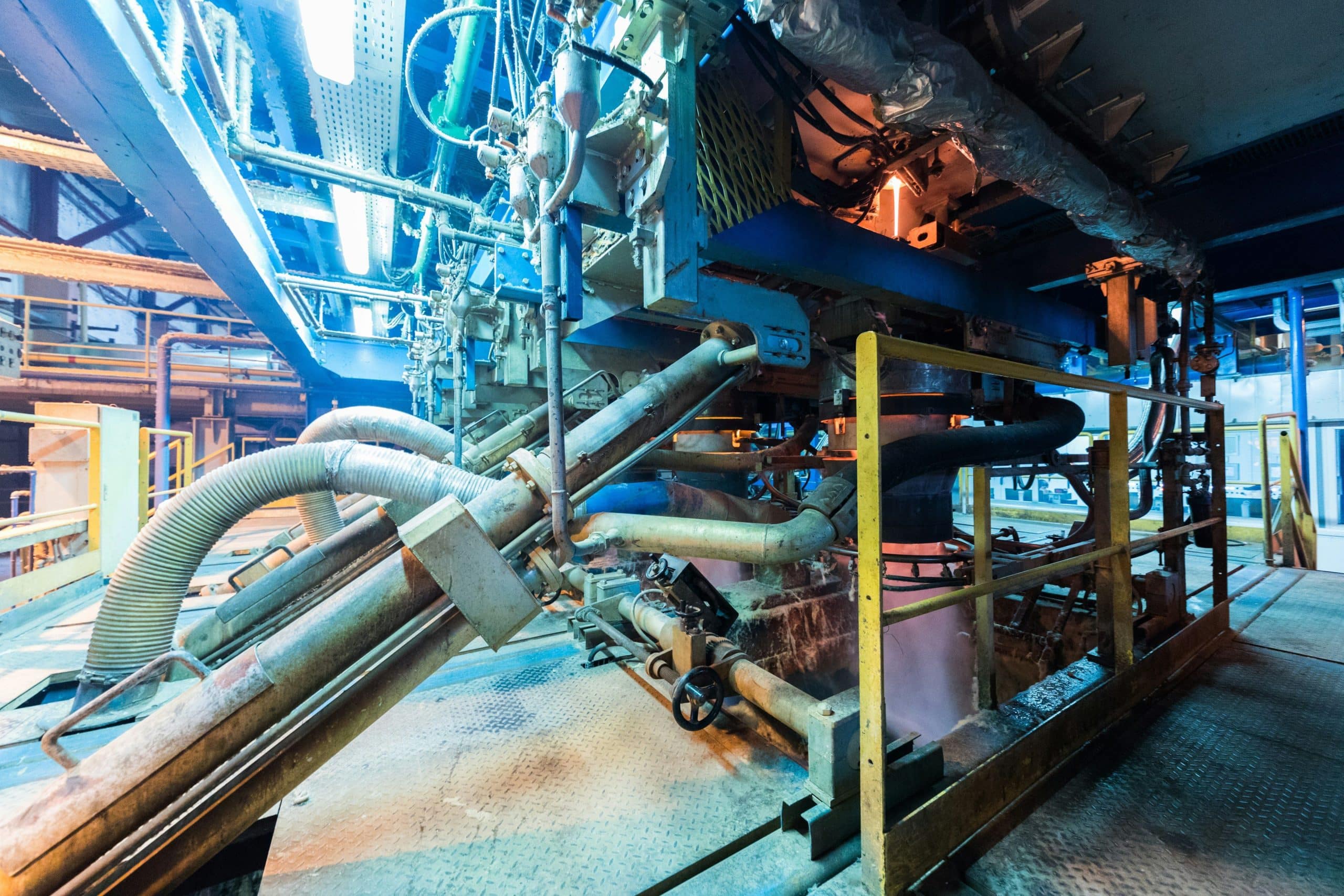Unlock the full potential of your ASUS ROG Crosshair VIII Hero with liquid cooling through expert overclocking techniques. This guide provides step-by-step strategies tailored to maximize performance while maintaining system stability. Learn how to configure settings, manage temperatures, and optimize components for seamless gaming and intensive applications. If you're ready to push the limits of your hardware, this resource equips you with vital knowledge and practical tips for successful overclocking. Let’s enhance your gaming experience together!
Understanding Overclocking Fundamentals
Overclocking is a technique used to increase the performance of computer components, primarily CPUs and GPUs, by running them at speeds higher than their official specifications. This is achieved by adjusting the clock multiplier and voltage settings, allowing the component to perform more operations per second, thus enhancing its speed and efficiency.
This might interest you : Optimizing Your Lenovo ThinkPad X1 Extreme for Seamless VMware Workstation Virtual Machine Performance
The architecture of CPUs and GPUs plays a crucial role in overclocking. CPUs consist of multiple cores, each capable of executing instructions, while GPUs are designed with numerous smaller cores optimized for parallel processing. Understanding these architectures is essential for effective overclocking, as it helps identify which components can be pushed beyond their limits without causing instability.
Key terms in overclocking include:
Have you seen this : Ultimate Guide to Building a High-Performance Gaming PC: Intel Core i7-11700K and NVIDIA RTX 3070 in a Stunning Lian Li PC-O11 Dynamic Case
- Clock Speed: The rate at which a CPU or GPU executes instructions, measured in GHz.
- Voltage: The electrical power supplied to the component, which can be increased to stabilize higher clock speeds.
- Thermal Throttling: A safety feature that reduces clock speed to prevent overheating.
Overclocking principles revolve around finding the optimal balance between increased speed and system stability. While it offers significant performance enhancement, it also requires careful monitoring of temperatures and power consumption to avoid potential damage. With a solid grasp of these concepts, users can safely explore the benefits of overclocking.
ASUS ROG Crosshair VIII Hero Features
The ASUS ROG Crosshair VIII Hero stands out with its impressive motherboard features designed to optimise performance for overclocking enthusiasts. At the heart of its design is a robust power delivery system, essential for maintaining stability during intense operations. Equipped with high-quality VRMs (Voltage Regulator Modules), the motherboard ensures efficient power management, crucial for supporting increased clock speeds without compromising stability.
Unique Overclocking Features
One of the standout features of the ROG Crosshair VIII Hero is its sophisticated cooling solutions. It includes a comprehensive thermal design with heatsinks and fan headers that efficiently manage heat dissipation. This is particularly important when pushing the limits of your CPU and GPU, as excessive heat can lead to thermal throttling and reduced performance.
The motherboard also boasts AI Suite 3, an intuitive software that simplifies the overclocking process. It provides real-time monitoring and control over various parameters, allowing users to fine-tune settings for optimal performance. This feature is particularly beneficial for those new to overclocking, as it reduces the complexity involved in manual adjustments.
In addition, the ROG Crosshair VIII Hero offers enhanced connectivity options, including multiple PCIe slots and high-speed USB ports, ensuring seamless integration with other components. These design advantages make it a preferred choice for gamers and professionals seeking to maximise their system's capabilities.
BIOS Settings for Optimal Overclocking
To harness the full potential of your ASUS ROG Crosshair VIII Hero, understanding the BIOS settings is crucial. Accessing the BIOS is straightforward: restart your computer and press the "Delete" key during the boot process. Once inside, you'll find a user-friendly interface designed to simplify overclocking settings.
Navigating ASUS BIOS
The ASUS BIOS is equipped with an EZ Mode for beginners and an Advanced Mode for more experienced users. In EZ Mode, you can quickly monitor system status and make basic adjustments. For detailed overclocking, switch to Advanced Mode, where you'll find comprehensive options to tweak your system.
Key Overclocking Settings
In Advanced Mode, focus on the AI Tweaker tab. Here, you can adjust the clock multiplier to increase CPU speed. It's essential to maintain a balance between performance and stability. For voltage settings, start with a modest increase, typically around 1.25V to 1.35V, depending on your CPU model. This helps stabilize higher clock speeds without risking damage.
Recommended Voltages and Multipliers
For Ryzen CPUs, a clock multiplier of 40-42 and voltage of 1.35V are common starting points. Intel CPUs might require different settings, so consult the manufacturer's guidelines. Always monitor temperatures closely to avoid overheating, ensuring your overclocking efforts are both effective and safe.
Liquid Cooling Compatibility and Setup
Liquid cooling solutions are essential for those looking to push their systems to the limits, especially in overclocking scenarios. The ASUS ROG Crosshair VIII Hero motherboard is compatible with a wide range of liquid cooling systems, ensuring that users can effectively manage heat and maintain system stability.
Compatible Liquid Cooling Solutions
When selecting a liquid cooling system, it's vital to ensure compatibility with your motherboard. The Crosshair VIII Hero supports both AIO (All-In-One) and custom loop liquid cooling solutions. This flexibility allows users to choose between ready-to-use systems or more complex custom setups, depending on their expertise and cooling requirements.
Installation Tips for Liquid Cooling Systems
Proper installation of liquid cooling systems is crucial for optimal performance. Begin by ensuring all components, such as the pump and radiator, are securely mounted. Use thermal paste to improve heat transfer between the CPU and the cooling block. It's also important to check that all connections are watertight to prevent leaks.
Benefits in Overclocking Scenarios
Liquid cooling systems offer numerous benefits in overclocking. They provide superior heat dissipation compared to air cooling, reducing the risk of thermal throttling. This allows for higher and more stable clock speeds, ultimately enhancing system performance. Additionally, liquid cooling systems often operate more quietly, creating a more pleasant computing environment.
Performance Benchmarks and Expectations
To truly appreciate the impact of overclocking, examining performance benchmarks is essential. These benchmarks provide a quantitative analysis of how systems perform after overclocking, offering insights into both gaming and computational tasks.
Stock vs. Overclocked Performance
When comparing stock and overclocked performance, the differences can be quite significant. Overclocking results typically show a noticeable increase in frame rates in gaming scenarios. For instance, a GPU overclock might yield a 10-20% improvement in frames per second (FPS), enhancing overall gaming performance and providing smoother visuals. Similarly, CPU overclocking can lead to faster processing times in computational tasks, such as video rendering or data analysis.
Real-World Gaming and Computational Metrics
In real-world applications, these performance benchmarks translate to tangible benefits. Gamers can expect more responsive gameplay, especially in graphics-intensive titles. For professionals, overclocking results in reduced processing times for complex computational tasks, improving productivity. It's important to note that the exact gains depend on the specific hardware and the extent of the overclocking applied. However, the potential for enhanced performance makes overclocking a compelling option for those seeking to maximise their system's capabilities.
Troubleshooting Common Overclocking Issues
Overclocking can enhance your system's performance, but it often introduces stability issues that require careful troubleshooting. Common problems include random system crashes, overheating, and unexpected shutdowns. These issues can stem from improper voltage settings or excessive clock speeds, leading to overclocking problems.
Common Stability Issues
Stability issues typically manifest as system crashes or freezes during intensive tasks. This often occurs when components are pushed beyond their limits without adequate cooling or power supply. Overheating is a frequent culprit, as increased clock speeds generate more heat than standard cooling solutions can handle.
Diagnostic Tools and Methods
To identify and resolve these issues, several diagnostic tools can be employed. Software like Prime95 or AIDA64 stress-tests your CPU and GPU, revealing weaknesses in your overclocking setup. Monitoring tools, such as HWMonitor, provide real-time data on temperatures and voltages, helping pinpoint the root cause of instability.
Solutions for Overheating and System Crashes
Addressing overheating involves enhancing your cooling system, perhaps by upgrading to a more efficient liquid cooling solution. For system crashes, consider lowering the clock multiplier or adjusting voltage settings to find a stable balance. Regularly updating your BIOS can also resolve compatibility issues, ensuring smoother overclocking experiences.
Safety Precautions for Overclocking
When engaging in overclocking, ensuring safety precautions is paramount to prevent hardware damage. Monitoring temperatures and voltages is crucial, as excessive heat and improper voltage settings can lead to component failure.
Importance of Monitoring
Regularly check the temperatures of your CPU and GPU using monitoring software. Keeping temperatures within safe limits, typically below 85°C, prevents thermal throttling and ensures longevity. Voltage levels should also be monitored; excessive voltages can cause permanent damage to your hardware.
Recommended Safety Measures
- Cooling Solutions: Invest in efficient cooling systems, such as liquid cooling, to dissipate heat effectively.
- Incremental Adjustments: Gradually increase clock speeds and voltages to find the optimal balance between performance and stability.
- Stress Testing: Use stress testing software to evaluate system stability under load, identifying potential issues before they cause damage.
Guidelines for Safe Overclocking
Adopt safe overclocking practices by consulting manufacturer guidelines specific to your hardware. Ensure your power supply can handle increased demands, and avoid pushing components beyond recommended limits. Regularly update your BIOS and drivers to maintain compatibility and stability. By adhering to these overclocking safety measures, you can enhance performance while protecting your investment.
User Experiences and Additional Resources
Exploring user experiences offers valuable insights into the practical aspects of overclocking. Many enthusiasts share their journeys, highlighting both successes and challenges. These testimonials often reveal the nuances of balancing performance gains with system stability. Users frequently report improved gaming performance and faster processing capabilities, but also caution about the potential for increased heat and system instability.
Community Insights
Engaging with community insights can significantly enhance your overclocking knowledge. Online forums such as Overclock.net and Reddit's r/overclocking provide platforms for users to exchange tips and troubleshoot issues. These communities are treasure troves of information, offering real-world advice from both novice and experienced overclockers. Participating in these discussions can help you avoid common pitfalls and refine your techniques.
Online Resources
For those seeking to deepen their understanding, numerous online resources are available. Websites like Tom's Hardware and AnandTech offer detailed guides and tutorials on overclocking. These resources often include step-by-step instructions and video demonstrations, making them accessible to users at all levels. By leveraging these tools, you can continue to expand your overclocking skills and optimise your system's performance.











